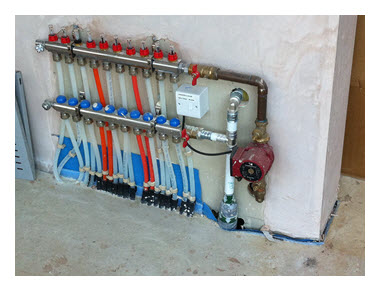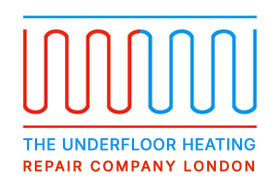Underfloor heating (UFH) is a smart, efficient and comfortable way to heat your home. Whether you live in a modern London flat, a converted Victorian terrace, or a newly built home in the suburbs, UFH offers discreet warmth and frees up valuable wall space. But like all heating systems, it requires regular maintenance to ensure it operates efficiently and lasts for decades.
This article will guide you through best practices to maintain your underfloor heating system—whether water-based (wet) or electric—so you can enjoy reliable warmth and avoid costly repairs down the line.
Why Regular Maintenance Matters
While underfloor heating systems are generally low-maintenance, neglecting them can lead to:
- Reduced efficiency and higher energy bills
- Uneven heating or cold patches
- Leaks in water-based systems
- Faulty thermostats or control units
- Long-term damage requiring system replacement
In a city like London, where heating bills and space constraints are key concerns, making your system last is not just economical—it’s essential.
Know Your System Type: Wet vs Electric
Before you begin maintaining your UFH, you need to know which type you have:
- Wet (Hydronic) Systems circulate warm water through pipes under the floor. These are often installed in larger areas or whole homes.
- Electric Systems use heating cables or mats under the floor and are typically used in smaller spaces like bathrooms.
Each system type has different maintenance needs.
Annual Servicing (Especially for Wet Systems)
Wet underfloor heating systems should be professionally serviced once a year, ideally in late summer or early autumn—before you rely on it for daily heating.
A qualified heating engineer will:
- Check manifold valves and connections for leaks
- Test pump operation and flow rates
- Bleed air from the system to remove airlocks
- Check zone controls and actuators
- Flush the system if necessary (especially after several years of use)
- Test thermostats and control panels
Electric systems don’t require annual servicing, but it’s still a good idea to test your thermostat and floor sensors annually.
Bleeding and Balancing the System
Over time, air can get trapped in wet UFH pipes, causing gurgling noises, cold patches in certain zones and lower efficiency. Bleeding involves removing trapped air through the manifold valves. Balancing the system ensures that each circuit receives the correct flow of water, which is especially important in multi-zone homes like townhouses or flats with underfloor heating on different levels.
This can be DIY-friendly if you’re confident, but it’s usually better left to a professional—especially for larger or complex systems.
Monitor and Clean the Manifold
The manifold is the control centre of your wet UFH system. Located in a cupboard, utility room, or near the boiler, it contains pumps, flow meters, mixing valves and zone valves. Inspect the manifold regularly (every 6 months) for dust or debris build-up, leaks or corrosion, and stiff or stuck valves. Wipe down external parts and report internal issues to a heating specialist.
Maintain Control Panels and Thermostats
Your underfloor heating is only as good as your control system. Whether you use a manual thermostat or a smart system, keeping it calibrated and responsive is vital.
Maintenance tips include:
- Test heating schedules seasonally
- Replace batteries in wireless thermostats annually
- Ensure temperature sensors (especially floor sensors) are not damaged
- For smart thermostats: update firmware and check Wi-Fi connectivity
In older properties in London where Wi-Fi signals can be inconsistent, ensure your smart controls aren’t suffering from weak signal areas.
Clean Floors Carefully
UFH systems are installed directly under your flooring, so how you clean your floors matters. For all floor types, avoid excessive moisture on wood or laminate, don’t use abrasive chemicals near thermostat sensors or cables, and use low-tog rugs to avoid blocking heat. Vacuum and mop gently, especially near cable ends or heat sensors in electric systems.
Don’t Block Heat Flow with Heavy Furniture
Underfloor heating works by radiating heat through the floor surface. If the heat can’t reach the room effectively, your system works harder, reducing efficiency and lifespan.
Avoid placing large, flat-bottomed furniture (sofas, wardrobes) directly over heated zones. Thick rugs or mats with high tog ratings (keep under 1.5 where possible) and storage boxes or clutter that sits on the floor for long periods should also be avoided.
This is especially important in compact London homes where space is limited, and it’s tempting to fill every corner.

Watch Out for Warning Signs
Catch problems early by looking out for cold zones or uneven heating, unusual smells (could indicate overheating or electrical issues), error codes on thermostats or control panels, higher than usual energy bills, or loss of pressure in a hydronic system.
If you notice any of these, contact a professional UFH engineer immediately. In London, several specialist firms offer diagnostics specifically for underfloor systems.
Insulate Properly to Protect the System
Good insulation protects your UFH system from heat loss and overwork. Make sure floors were properly insulated during installation (especially basements), external walls and doors are draught-proofed, and that you use the correct underlay for wood, laminate or carpet flooring.
If you’re planning renovations or extensions, consult your installer to ensure the heating system is protected during any floor work.
Check Your Warranty and Service Records
Most underfloor heating systems come with warranties—some lasting up to 25 years for pipework and 10 years for electric mats. However, these warranties often require:
- Annual servicing
- Proper installation records
- Use of approved flooring materials
Keep a folder (digital or physical) of all documents related to installation, commissioning certificates, servicing invoices and repair logs. This is particularly helpful when selling a London property—prospective buyers value well-maintained UFH systems.
Periodic Power and Resistance Testing (Electric Systems)
For electric systems, a qualified electrician should test cable resistance, insulation resistance and continuity of heating mats. These tests can detect early signs of wear or damage, especially in high-traffic areas. Ideally, they should be performed every few years or if you’ve recently done any building work.
Don’t DIY Repairs Without Experience
While some maintenance tasks (like bleeding or testing thermostats) can be DIY-friendly, most underfloor heating repairs require professional knowledge—especially when lifting flooring is involved, pipe leaks are suspected, electrical faults are present, or control wiring needs inspection.
Incorrect repairs can cause more damage or void your warranty. In London, always use a UFH-certified engineer.
Plan a System Health Check Every 3–5 Years
Alongside annual servicing, a more thorough system health check every few years is wise. This may include full flushing and refilling of wet systems, full diagnostics for electrical resistance, cleaning and recalibrating smart controls, and infrared scanning to check even heat coverage.
In high-use homes or rental properties, this preventative maintenance adds long-term value.
Conclusion: Keep Your System Efficient, Warm, and Worry-Free
Underfloor heating is one of the most effective and comfortable ways to heat your home, especially in the urban and often space-limited environments of London. But it’s not a “fit and forget” solution. With just a bit of planned care—annual servicing, keeping controls in check, and avoiding poor usage habits—you’ll ensure that your system works smoothly for decades to come.
If you’re unsure about the condition of your system, reach out to a professional UFH maintenance specialist. Peace of mind is only a service visit away.



